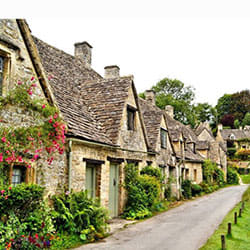May 13 of this year marked the hundredth anniversaries of the apparitions of Our Lady of Fátima. To celebrate, Pope Francis journeyed all the way from Rome to the Sanctuary of Fátima to offer his prayers.
Portugal is a country of devout Catholic believers, and when the pope arrived on Friday, May 12, some of its institutions (including schools) hastily announced closures.It’s unclear whether everyone then decided, as you might expect, to head out to Fátima or sit at home with their eyes glued to the television—but what we do know is that the streets of Lisbon were nearly deserted that day in the midst of peak tourist season. Nothing seemed to be going on.Fátima is one of three major holy sites recognized by the Vatican, and draws nearly six million tourists from around the world each year. Of these, an estimated four to five hundred thousand are religious pilgrims. On May 13, some 500,000 people crammed themselves in the square in front of the sanctuary to hear the pope give mass. The pope began by offering a prayer to Maria, Our Lady of Fátima, and remarked how moved he was that the crowd became so quiet that you could hear the chirping of tiny birds in the background.Six thousand security personnel were on duty, and a special app was developed in order to keep people safe. Meanwhile, some took advantage of the event to try to make some money. Campgrounds and other accommodations headed towards peak summer rates, while the price of hired cars and rideshares were several times the normal amount. There were even people offering to pray or take pilgrimages for people online! Given that they were charging up to 5,000 euros for the service made it even stranger for a religious event.
So what exactly was the Miracle of Fátima? On May 13, 1917, an apparition of the Virgin Mary appeared to three shepherd children. The children continued to encounter the Holy Mother on the thirteenth day of each month, each time entrusted with various messages or prophecies. The last time she appeared was on October 13, in front of a crowd of more than 70,000 people who had gathered to catch a glimpse of her and various supernatural phenomena that were taking place. This series of apparitions is collectively known as the Miracle of Fátima.The Fátima prophesies can be broadly categorized into what are known as the “three secrets.” The first was a vision of hell, the second an end to the Great War and the outbreak of another one, and the final one was to be kept secret by the Catholic Church until 1960. However, it would be the year 2000 before the Vatican published the details on the third secret. The church announced that the secret was the assassination attempt of Pope John Paul II on May 13, 1981, but this was such a minor matter compared to the other two prophesies. The popes who read it said nothing on the matter, and it was hardly possible that the assassination would have been kept secret for an additional forty years after it was to be revealed. For this reason, many questions still surround it.
Scientists invariably seek to verify occult phenomena like these, and Portugal has also put together a special collection of works that seek to scientifically explain the miracle. There is great interest in a work published by the bishop D. Carlos Azevedo himself, who claims in his book Fátima – Das Visões dos Pastorinhos à Visão Cristã (Fatima: From the Visions of Shepherds to the Visions of the Christian Church ) that these were not apparitions of the Virgin Mary, but visions. He writes that what really occurred were internal perceptions that triggered the hearts, minds, sensitivity, and imaginations of those who witnessed them. He explains, however, that his point is not to deny the mystical phenomena, but to say that in this day and age, it makes more sense to interpret the visions themselves as the miracle. The point is not for us to determine whether they really happened or not, but to understand their motives and message.




























































